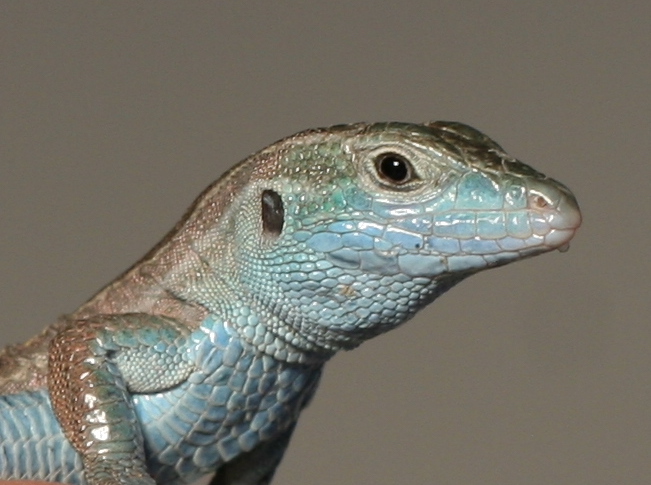Project 10.2

- PhD student: Yu-Chia Ku
- Supervisor: Peter Baumann
- Co-Supervisors: Qiaowei (Miya) Pan
- Further TAC-members: Ann Kathrin Huylmans, Claudia Keller Valsecchi
- Research Group
Aspidoscelis whiptail lizards provide a unique model for reproductive plasticity as multiple modes of reproduction co-exist within this genus, including sexual, obligate and facultative parthenogenesis. I am studying sex determination and sex chromosome evolution by characterizing the sex-linked genomic regions in A. marmoratus and A. arizonae. Considering the limits of traditional methods to recognize the syntenic fragments in sex chromosomes, I aim to bridge the cytogenetic data with bioinformatics tools to gain insights into the sex determination mechanism.
Sex determination initiates the biological sex distinction and separation of an offspring in developing embryos and generating gametes. In some cases, the region of the genome that is involved in sex determination has evolved to be sex-specific and non-recombining. Studying sex determination mechanisms provides a broader understanding and context for other evolutionary biology models, such as speciation, sexual dimorphism, and the divergence of sex chromosomes. Most sexual reproduction models in humans and other model species led to the assumption that sex determination is based on old, highly diverged sex chromosome systems. However, newer studies have shown that there are diverse mechanisms for sex determination among many taxa. Most vertebrates have one or a few master-switch genes responsible for triggering male or female sexual development. Various factors may mediate sex determination including temperature, population density, hormones, nutrients, etc.
Whiptail lizards are recognized as genetic sex-determination species. However, most Aspidoscelis species lack readily recognizable heteromorphic sex chromosomes. Instead, they have (nearly) homomorphic pairs of chromosomes. In addition, the asexual hybrid vertebrates inherited genetic sex determination by mostly undifferentiated sex chromosomes. Previous research (Charles Cole et al. 1969) used karyograms to identify chromosome 3 as XY pairs in A.marmoratus. With the current high-throughput approaches available, I aim to confirm or refute whether chromosome 3 are sex-correlated chromosomes in A. marmoratus, and to search the sex-linked regions at the genomic level in other Aspidoscelis species including A. arizonae.
Reference:
Cole, C. J., C. H. Lowe and J. W. Wright (1969). "Sex chromosomes in teiid whiptail lizards (genus Cnemidophorus). American Museum novitates; no. 2395."
